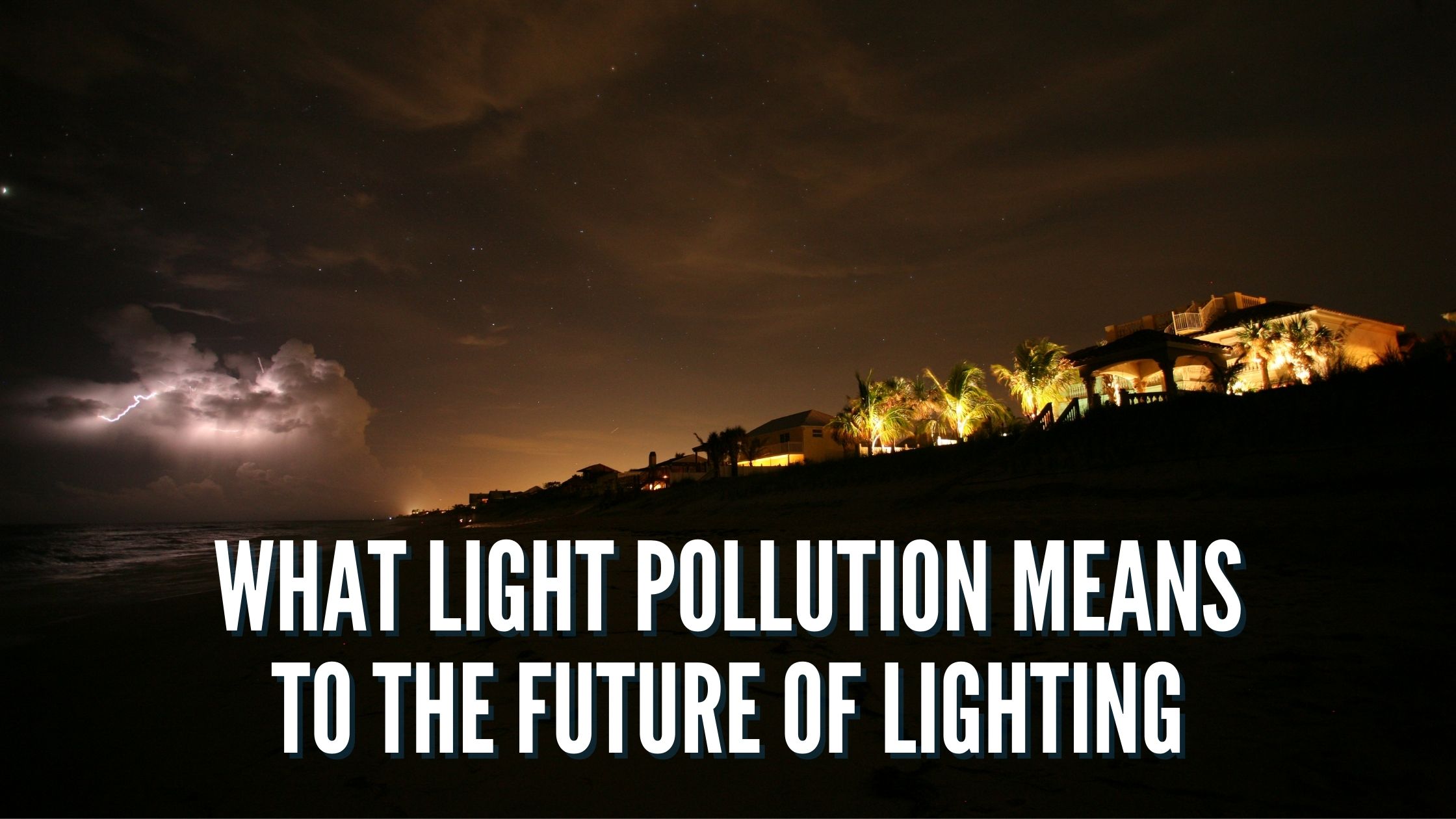


Ever look at a map from a satellite in orbit? Notice all the lights that you can see. What about looking up at night to find the stars in the sky? How much do you not see due to light pollution? These are some serious questions that are starting to be asked by more people. Light pollution is becoming a problem, and dark sky-friendly lighting is the key to solving this issue.
We are from a small town, so the difference between us and a place like New York City as far as light pollution is way different; however, we all experience some form of light pollution. There are very few areas left: dark sky areas, where you can see the night sky without obstructing lighting pollution. Light pollution isn’t something you think of, but does it really affect us? And if so, how?
Light pollution is how light shines upwards, illuminating dust and debris in the air and creating a cloud effect that blocks the night sky. Since the beginning of time, we have depended on the night sky for information regarding location, seasons, direction, etc. However, with modern technology, we don’t rely on this for our data, but does it still affect us? And if so, what can we do to change the light pollution factor of areas?
Reducing all light pollution is not probable, and we will never have the dark sky that was visible hundreds of years ago; however, we can make a positive impact. Providing light in the areas that it is required only at times is necessary. Lowering mounting heights of fixtures. And using dark sky-compliant fixtures will reduce the amount of light pollution and increase our visibility to the night sky.
The US spends 1.5 billion dollars every year on wasted energy due to light pollution. As a result, towns all over the US are setting light ordinances moving towards using full cutoff fixtures only to preserve the night sky and reduce costs.
A dark sky-friendly light provides a distinct light pattern that shields from casting light above the top of the fixture. This type of fixture provides lighting only towards the ground where the lighting is required. It also uses the needed light levels and does not over-light an area to reflect the light up into the atmosphere. Finally, the lights should turn off when not required.
Non-dark sky fixtures cast light in all directions, including upwards. This distribution of light wastes energy and causes a twilight effect that confuses wildlife and disturbs breeding patterns. It also produces a glare for people driving on roads that can distract and be tiresome for the eyes.
Dark sky lighting is vital as light pollution disrupts ecosystems and threatens astronomy. On top of that, the wasted light costs a lot in wasted energy, about $2.2 billion per year, in the US alone. Dark sky-friendly fixtures push the lighting down where it is actually needed and not up into the atmosphere. In addition, dark sky fixtures provide less glare and light pollution, allowing wildlife to resume their natural rhythm and allowing large and small astronomers to enjoy the night sky and see the stars above.
The light pollution doesn’t just affect animals, but humans as well. The US National Library of Medicine did a study on the health effects of light pollution. Decreased melatonin produced in the body affects our hormonal system and sleep cycles. Melatonin deficiencies cause an increased risk of cancers, especially breast cancer, and it is unknown what other risk factors this produces. Light pollution also causes many sleep disorders. The study says we are only at the tip of the iceberg in research at this point.
California has taken light pollution and wasted energy into consideration and implemented Title 24 Energy Efficient Standards. These standards are for residential and non-residential areas to decrease their use when the light is not required, like after a facility closes for the night, and using full cutoff fixtures with motion sensors or adaptive lighting controls. This change is set to lower the consumption of electricity in the state.
Other states, like Hawaii, require LPS lamps for their telescope areas with a full cutoff fixture, so there is little to no light pollution, and any light will not affect their telescopes when looking at the night sky. Coastal areas in Florida mandate that full cutoff fixtures with an amber color are used to help with sea turtles. All these different steps are being taken to help reduce light pollution and its effects on nature.
Making the switch to dark sky-friendly lighting is simple by changing the fixture to an IDA-approved dark sky-friendly fixture. Looking for the IDA seal provided by the International Dark-Sky Association on fixture specifications or talking to your lighting representative for their recommendation is the first step. Lighting levels are typically better than non-dark sky fixtures as lighting is cast only downward towards the ground where the lighting is needed.
Take steps not to waste light where it is not needed, provide high-efficiency lights, look at local ordinances when installing new lighting and turn it off when you don’t need it. Taking small steps in residential and business installations will ensure that we all do our part in reducing our impact on the environment.
Talk to your lighting representative if you have a fixture that pushes light in all directions and is not dark sky approved for an alternative. You can also make sure to use dark sky fixtures on any new lighting projects. By switching the lighting to a full cutoff, dark sky-approved fixtures will allow us to reclaim our nights and enjoy all the beauty they hold.
